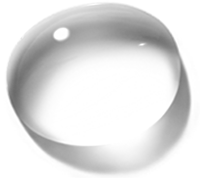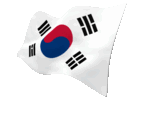A Present from the Eskimos
페이지 정보
본문

The Canadian Inuit Art Exhibition at Shinsegae Art Gallery in Seoul, supported by the Embassy of Canada, from August 1 to 18 was a rare and unique event of art to be remembered long and deeply appreciated by all the gallery-goers in Korea. It was the first art exhibition at which we could catch a glimpse of the exquisite artistic works by the Inuits, by those who are commonly known to us as the Eskimos. We knew vaguely that Eskimos were the natives of the Arctic, -- of Greenland, Alaska, northern Canada, and Siberia, living under the extremely harsh and unbearably cold climate, where fine arts were simply impossible to be born. But we were wrong. We were ignorant. The exhibition was a fresh reminder that the first artist in the history of mankind was a caveman. The fine prints of pictures and some piece of sculptures and tapestries displayed were indeed heart-warming presents from the people who live in the coldest place on the earth.
The unusual aspect of these presents from the Inuits is that you can like them very much at first glance. You do not need any expert to tell you something about them in order to enjoy them. It is like standing before large and lovely Christmas cards you would like to buy for you friends. Unlike many modern works of art that puzzle and befuddle you, the Inuit arts, with their seemingly simple subjects and techniques, make you feel comfortable before them, and relieved in your understanding, judgement and sensibility of arts. These are certainly not the great works of art that can be compared with those of Rubens or of Rembrandt, but these are different works of art born of different time and environment by different artists. And there is no reason for all the works of art to be so great to please us.
It is very amusing to find that most of the pictures displayed are the prints made by stone-cut, lithograph or stencil, unlike the pictures painted on the canvases. This means the Eskimos have developed special manual skills under the limited living conditions where everything needed must be made by their own hands. All the Eskimos over forty are said to be sculptors in some sort, and Henry Moore, one of the best and renowned English sculptor world-wide in the 20th century, seeing some of the handicrafts produced by the unknown Eskimos for the tourists, is said to have exclaimed, "I wish those are mine." This also means there can be as many original prints as we want, and the prices of the works can be reasonably low. Prices of some works of art are horrendously high these days for no good reasons.
The Inuit works of art are very deceptive in that they make us believe that Inuits' way of life is simple as well as easy, and limited and confined to nature to be found around them. You are charmed and intrigued by the elements and themes composing their works: birds, fish, dogs, ice and snow, water, seals, bears and caribous. Men hunting or fishing. Children playing. Women caring babies and mending shoes.
It is also an ideal world. No one is suffering here or dying. Everything is moving or growing. The harsh environment of the Arctic land has become an ideal setting for an idyllic life, and hard works are transformed into life-giving plays. The hardiness of nature is softened and the wildness of the Arctic animals is domesticated and tamed. Killing is not a bloody act of violence here, but an act of grace and mercy. In the world of the Inuit art the Darwinian dictums such as "Struggle for existence." or "Survival of the fittest," are not cold naturalistic slogans but just another natural ways of life.
It is surprising, indeed, to see that none of the works exhibited show or even hint that Eskimos' life today has been complicated, changed or tainted by modern science and technology. It seems as if their life and time had completely stopped sometime long ago, when there were no guns, electricity, cars, airplanes, telephones and televisions. You might well wonder and ask if they are still living in the igloos and eating raw meat, and isolated from the rest of the world. Far from it. They have all the material comforts and modern conveniences as well as evils as much as we have. But it is the Inuit artists who are insistently and persistently abstaining from using and treating these alien materials and elements for their artistic works.
The world depicted by the Inuit artists is, therefore, not the world as it is today but the ideal world deeply rooted in their subconsciousness. It is the eternal and perpetual world of childhood we all remember and want to go back to. It is the world that has already been destroyed or is on the brink of destruction, but too rich and powerful, as all our childhood is, to be erased from the psyche of the Inuit artists. Weak and fine as their hands are, the artists are very often the most valiant warriors battling against the onrush of the modern and alien civilizations, and the most tenacious protectors and preservers of the old values.
The Inuit artists who have created all these works of arts are very humble individuals whose visions are not tainted or misdirected by any great but all unnecessary theories of art, ancient as well as modern. They saw with their own eyes and expressed what they saw with their own way. They never went to the great art school to learn their art. It seems that they are not even aware of the fact that they are endowed with that remarkable talent. They seem to blush with shyness at being called artists. Their common and ultimate purpose of their work is to create beauty, and share it with the viewers. That's all.
All art is alchemical in the sense that it distills the raw stuff of experience and reality into something rarer and finer. Understood metaphorically, every real artist is an alchemist. The Inuit artists have created some simple but eternal forms out of the chaotic, ugly, monotonous and ever-changing elements of life -- eternal forms that please our eyes, haunt our minds, ache our heart with joy and longing, and tell long, long stories without end.
(September 5, 1991)
- 이전글Spring in the Zoo 21.01.13
- 다음글An Evening at Ravinia 21.01.13
댓글목록
등록된 댓글이 없습니다.








